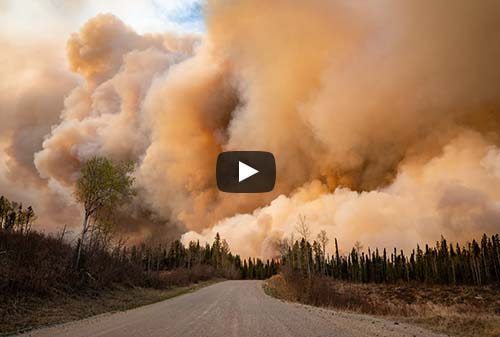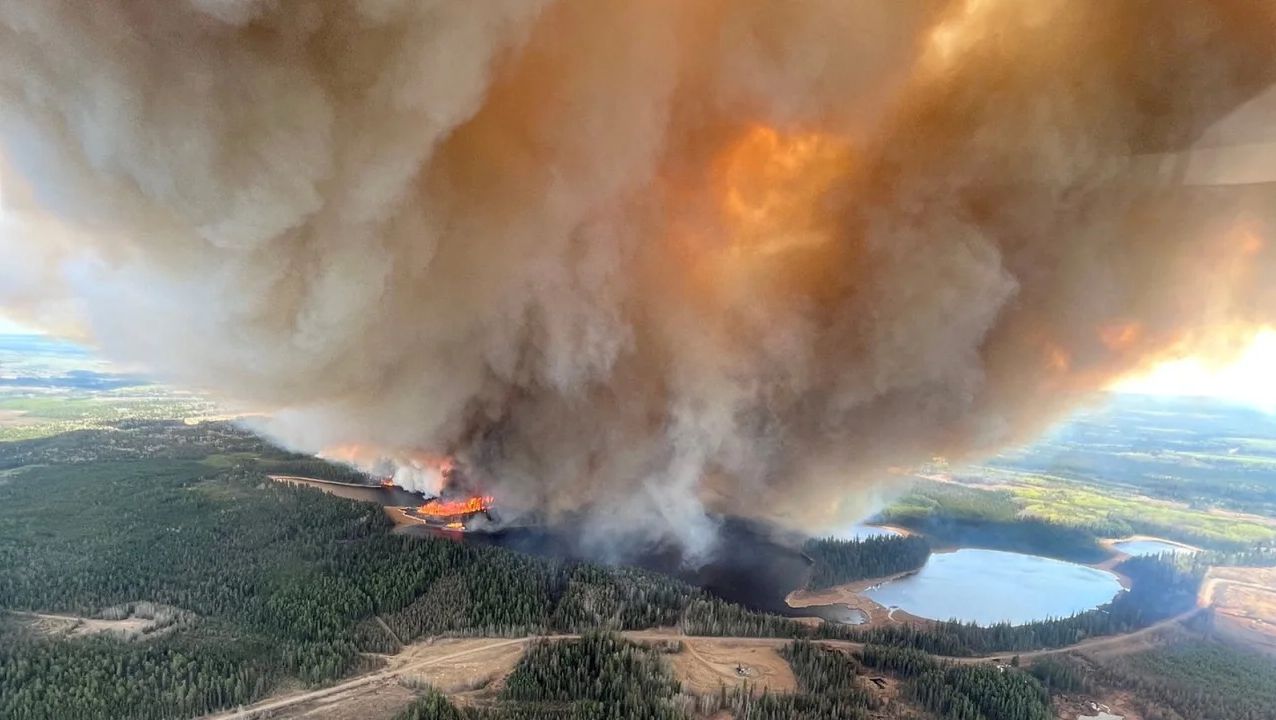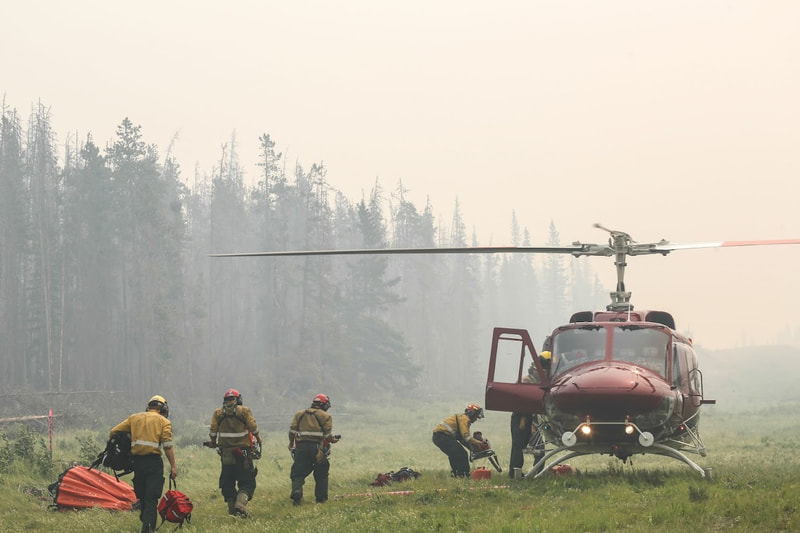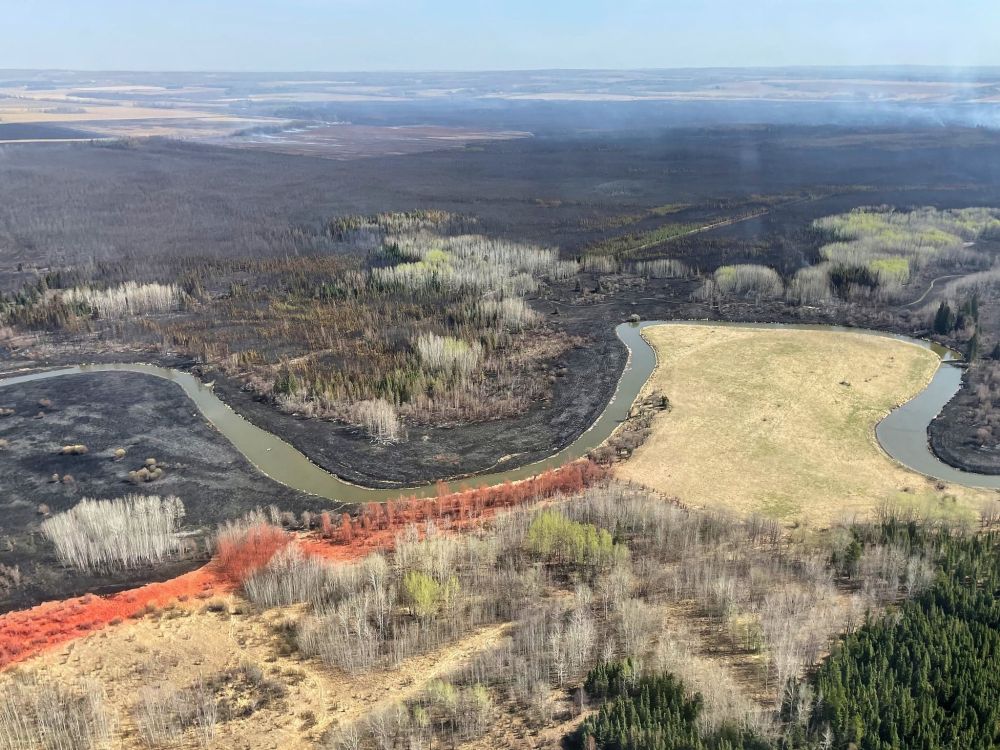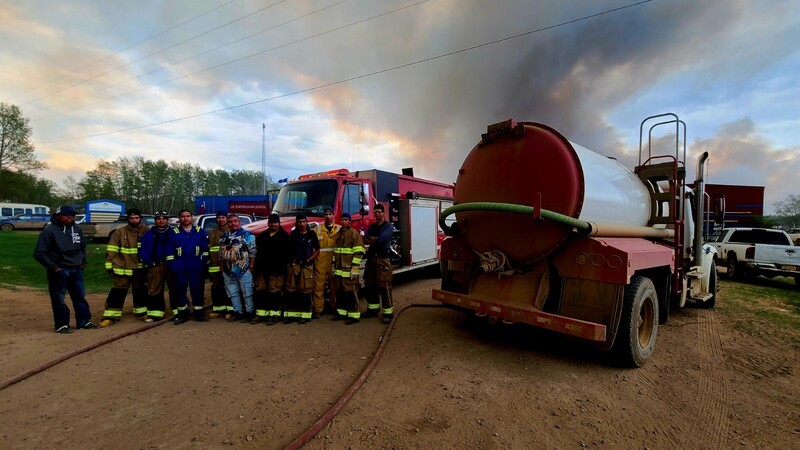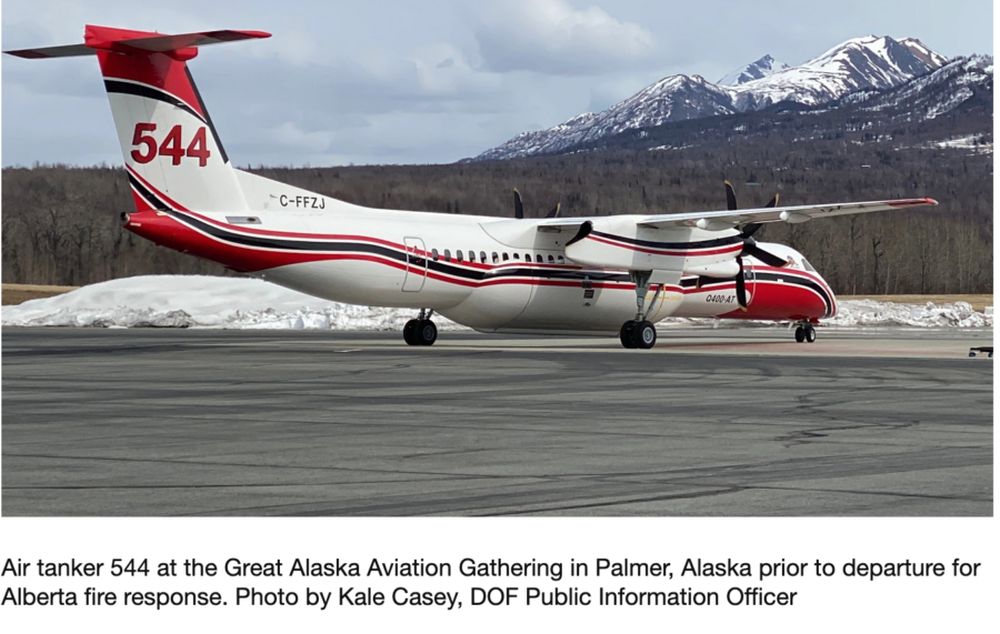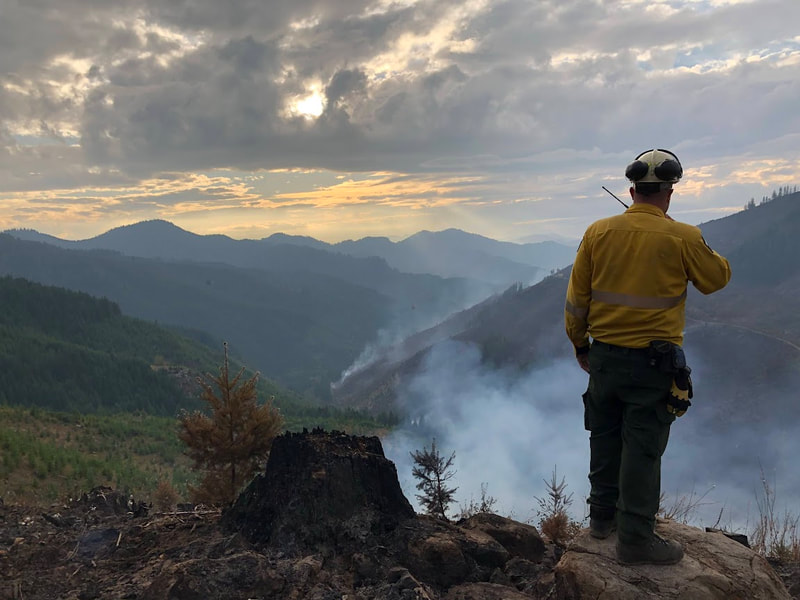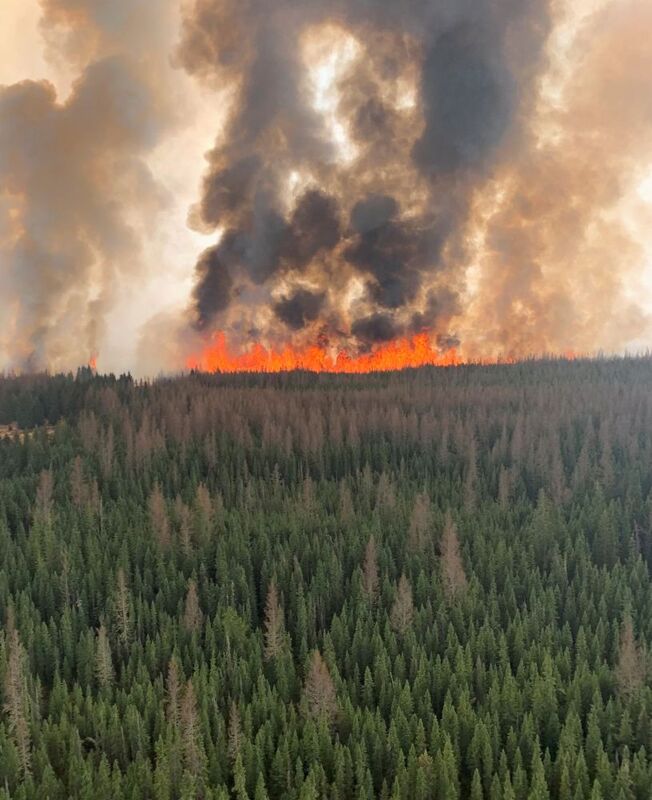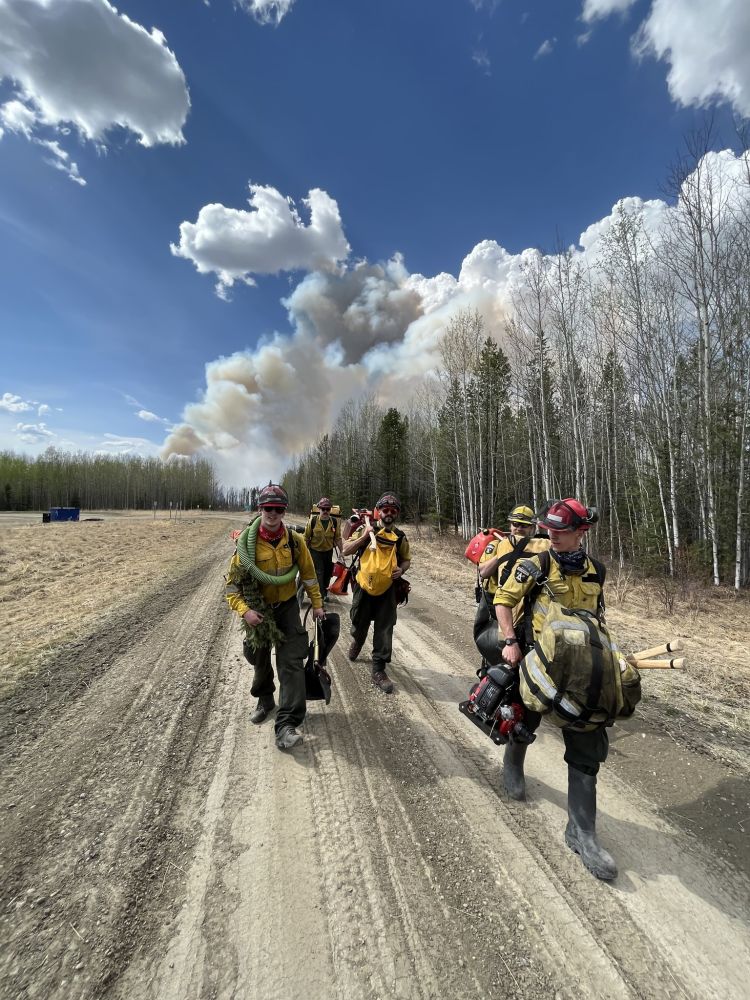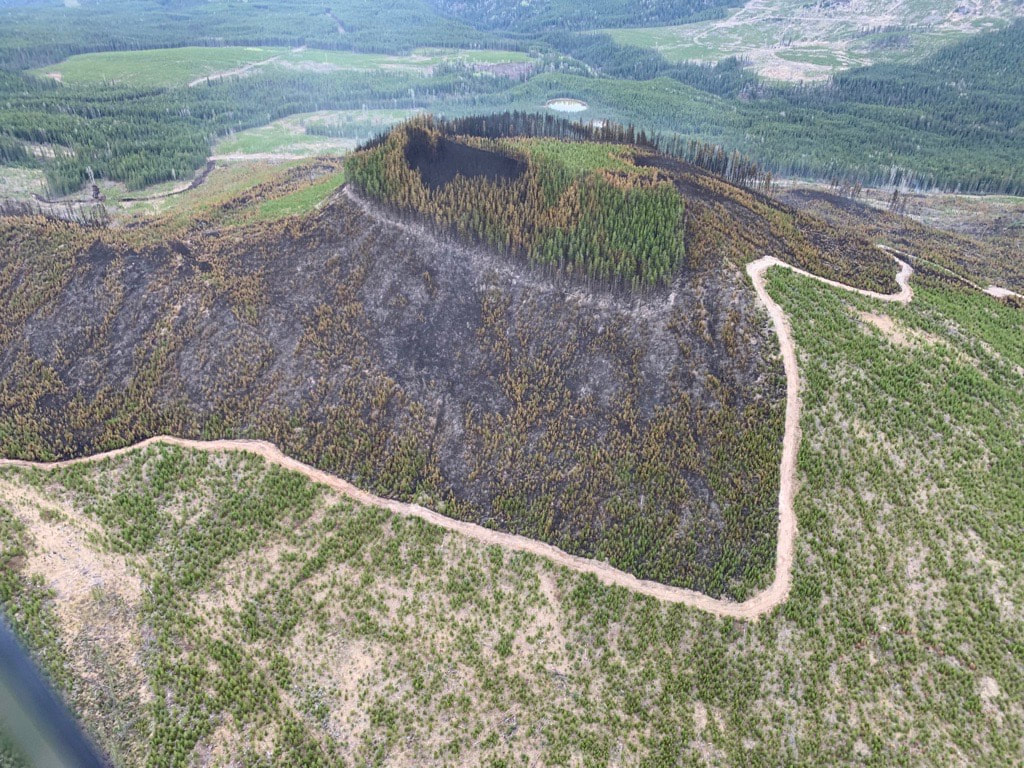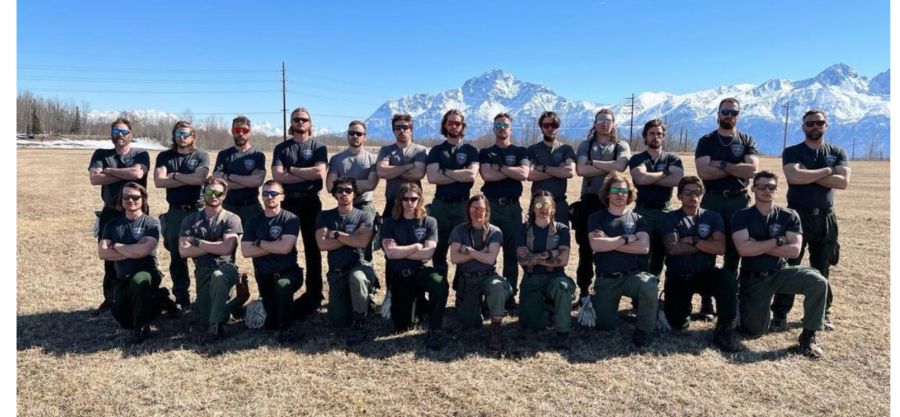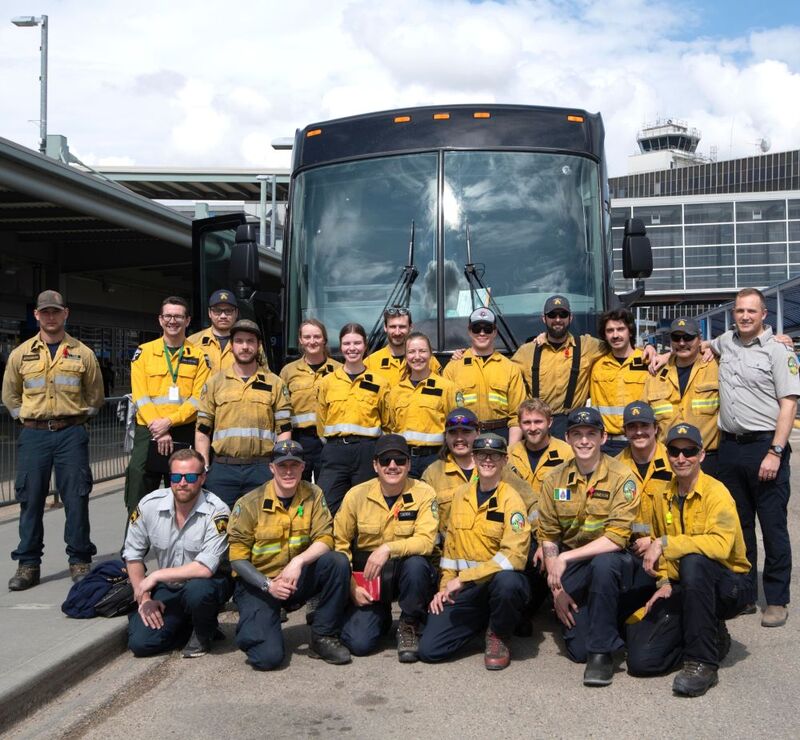- Home
- Magazines
-
Newsletters
- 19 July 2024
- 12 July 2024
- 5 July 2024
- 28 June 2024
- 14 June 2024
- 7 June 2024
- 31 May 2024
- 24 May 2024
- 17 May 2024
- 10 May 2024
- 3 May 2024
- 26 April 2024
- 19 April 2024
- 12 April 2024
- 22 March 2024
- 15 March 2024
- 8 March 2024
- 1 March 2024
- 23 February 2024
- 16 February 2024
- 9 February 2024
- 26 January 2024
- 19 January 2024
- 12 January 2024
- 22 December 2023
- 1 December 2023
- 24 November 2023
- 10 November 2023
- 3 November 2023
- 27 October 2023
- 20 October 2023
- 13 October 2023
- 6 October 2023
- 29 September 2023
- 22 September 2023
- 15 September 2023
- 8 September 2023
- 25 August 2023
- 18 August 2023
- 11 August 2023
- 4 August 2023
- 28 July 2023
- 21 July 2023
- 14 July 2023
- 7 July 2023
- 30 June 2023
- 23 June 2023
- 15 June 2023
- 2 June 2023
- 26 May 2023
- 19 May 2023
- 12 May 2023
- 5 May 2023
- 28 April 2023
- 21 April 2023
- 14 April 2023
- 6 April 2023
- 31 March 2023
- 24 March 2023
- 17 March 2023
- 10 March 2023
- 3 March 2023
- 24 February 2023
- 17 February 2023
- 10 February 2023
- 3 February 2023
- 27 January 2023
- 13 January 2023
- 22 December 2022
- 15 December 2022
- 9 December 2022
- 2 December 2022
- 25 November 2022
- 18 November 2022
- 11 November 2022
- 4 November 2022
- Advertising
- Subscribe
- Articles
-
Galleries
- AOSH Firexpo 2024
- Midvaal Fit to Fight Fire 2024
- WoF KNP 2023 Gallery
- TFA 2023 Gallery
- DMISA Conference 2023
- ETS 2023 Gallery
- Drager Fire Combat and Rescue Challenge 2023
- AOSH Firexpo 2023
- Midvaal Fit to Fight Fire
- WC IFFD 2023
- NMU 13th Fire Management Symposium 2022
- JOIFF Africa Conference 2022
- ETS 2022 Gallery
- TFA 2022 Gallery
- IFFD 2018
- SAESI
- TFA
- WRC 2018
- WRC 2019
- A-OSH/Securex
- IFE AGM 2019
- ETS Ind Fire Comp Nov 2019
- ETS Challenge 2021
- Drager launch
- Drager Fire Combat and Rescue Challenge 2022
- TFA
- Contact
- Home
- Magazines
-
Newsletters
- 19 July 2024
- 12 July 2024
- 5 July 2024
- 28 June 2024
- 14 June 2024
- 7 June 2024
- 31 May 2024
- 24 May 2024
- 17 May 2024
- 10 May 2024
- 3 May 2024
- 26 April 2024
- 19 April 2024
- 12 April 2024
- 22 March 2024
- 15 March 2024
- 8 March 2024
- 1 March 2024
- 23 February 2024
- 16 February 2024
- 9 February 2024
- 26 January 2024
- 19 January 2024
- 12 January 2024
- 22 December 2023
- 1 December 2023
- 24 November 2023
- 10 November 2023
- 3 November 2023
- 27 October 2023
- 20 October 2023
- 13 October 2023
- 6 October 2023
- 29 September 2023
- 22 September 2023
- 15 September 2023
- 8 September 2023
- 25 August 2023
- 18 August 2023
- 11 August 2023
- 4 August 2023
- 28 July 2023
- 21 July 2023
- 14 July 2023
- 7 July 2023
- 30 June 2023
- 23 June 2023
- 15 June 2023
- 2 June 2023
- 26 May 2023
- 19 May 2023
- 12 May 2023
- 5 May 2023
- 28 April 2023
- 21 April 2023
- 14 April 2023
- 6 April 2023
- 31 March 2023
- 24 March 2023
- 17 March 2023
- 10 March 2023
- 3 March 2023
- 24 February 2023
- 17 February 2023
- 10 February 2023
- 3 February 2023
- 27 January 2023
- 13 January 2023
- 22 December 2022
- 15 December 2022
- 9 December 2022
- 2 December 2022
- 25 November 2022
- 18 November 2022
- 11 November 2022
- 4 November 2022
- Advertising
- Subscribe
- Articles
-
Galleries
- AOSH Firexpo 2024
- Midvaal Fit to Fight Fire 2024
- WoF KNP 2023 Gallery
- TFA 2023 Gallery
- DMISA Conference 2023
- ETS 2023 Gallery
- Drager Fire Combat and Rescue Challenge 2023
- AOSH Firexpo 2023
- Midvaal Fit to Fight Fire
- WC IFFD 2023
- NMU 13th Fire Management Symposium 2022
- JOIFF Africa Conference 2022
- ETS 2022 Gallery
- TFA 2022 Gallery
- IFFD 2018
- SAESI
- TFA
- WRC 2018
- WRC 2019
- A-OSH/Securex
- IFE AGM 2019
- ETS Ind Fire Comp Nov 2019
- ETS Challenge 2021
- Drager launch
- Drager Fire Combat and Rescue Challenge 2022
- TFA
- Contact
|
12 May 2023
|
Thousands more evacuated in Northern Alberta due to major wildfires, Canada
Almost 25 000 people who live in the Canadian province of Alberta have been evacuated as wildfires rage across the region, which is seeing abnormally hot weather and high winds, emergency officials said Saturday, 6 May 2023. There are at least 103 wildfires burning across the western province, Alberta Premier Danielle Smith said at a news briefing. “Much of Alberta has been experiencing a hot, dry spring and with so much kindling, all it takes is a few sparks to ignite some truly frightening wildfires,” Smith said. “These conditions mean it is very easy for a wildfire to both start and spread quickly.”
The fires have burned 121 909 hectares, roughly more than 301 000 acres and since Friday, 5 May 2023, at least 45 new wildfires have started and 14 local states of emergency issued, according to Smith. “I want to assure everyone that our province has the right tools, the right technology and the resources in place to tackle this challenge” she said.
Some residents in the community of Fox Lake, where the fires are severe, had to be evacuated by helicopters, according to Christie Tucker, Alberta Wildfire’s information unit manager. On Friday morning, dozens of fire fighters in Fox Lake were battling the fires, which burned nearly 11 000 acres, officials said.
In Drayton Valley, fire fighters, helicopters and air tankers battled an out-of-control fire that torched over 3 700 acres, according to Tucker.
Authorities in the municipality of Yellowhead County and the town of Edson have also ordered an immediate evacuation due to wildfires burning in Alberta, Edson officials tweeted. The town of Edson has a population of just under 9 000 residents, according to the community’s website.
On Friday night, Alberta officials expanded the mandatory evacuation order in Lac Ste. Anne County, which is about 50 miles northwest of Edmonton. Officials told residents evacuations could last up to three days.
Portions of Big Lakes County, home to about 5 600 residents, were also ordered to evacuate, including residents east of the West Prairie River and Highway 749 and south of Township Road 724. It’s unclear how many people are affected by the evacuations.
Officials asked Banana Belt residents to prepare “their properties by removing log piles, deadfall and plowing around properties if possible.”
“There is the potential for danger to life and health,” Big Lakes County officials said in a post.
“Temperatures have been 10 to 15 degrees above normal for a little while now,” Tucker said. “We still don’t have green grass and leaves all over the province, which means that the ground is very dry.”
The northern province has been experiencing extremely warm conditions and high winds, Tucker said and residents are not allowed to have open woodfires on public or private lands while the fires are burning.
There have been 348 wildfires in Alberta since January, burning more than 61 776 acres, Tucker said. “That’s significantly more wildfire activity this time of year than we’ve certainly seen any time in the recent past,” Tucker said.
Evacuations ordered in British Columbia
In northeastern British Columbia, the Peace River Regional District expanded its evacuation order for the Boundary Lake wildfire early Saturday. The BC Wildfire Service “continues to respond to the Boundary Lake wildfire located at the BC/Alberta border, east of #FortStJohn,” the agency tweeted, adding that the wildfire was estimated to cover 4 695 acres.
“The area is being impacted by heavy smoke and visibility is poor. Aviation resources are currently being challenged by the poor visibility. Drivers are advised to avoid Highway 64 due to the poor visibility,” the BC Wildfire Service said.
The initial evacuation order was “expanded as a result of aggressive fire behaviour and the risk to life safety,” according to Peace River officials. The order includes areas on the east to the Alberta border and on the south to the south side of Imperial Avenue, district officials said.
In southeastern British Columbia, a state of local emergency and evacuation orders were issued this week by the Regional District of Kootenay Boundary due to “the imminent danger of flooding to the life and property of persons resident or present.”
“The #BCWildfire Service is prepared to support flood response across the province this weekend,” the agency tweeted Friday, adding that “20 personnel have deployed to the #CacheCreekBC area, 33 personnel are stationed in the #GrandForksBC region and an additional 20 personnel are on standby to assist if needed.”
Josée St-Onge, a spokesperson with Alberta Wildfire, told a news conference on Friday, 12 May 2023, that fire fighting teams had been using the past week’s cooler weather to prepare for more challenging conditions. Those preparations included building firebreaks, reinforcing fire guards and readying fresh fire fighting teams. “The wildfire danger is expected to grow in the coming days. We are expecting hot and dry conditions in most of the province, which will make the wildfire danger climb. We’re likely to see more intense wildfire activity this weekend into early next week,” St-Onge said.
More than 1 000 fire fighters have been deployed to Alberta since the fires began, with hundreds more expected to arrive next week. The federal government announced Thursday that the military will be deploying 300 soldiers to provide assistance.
Last weekend, the Alberta government declared a state of provincial emergency. There were 76 active wildfires as of Friday afternoon, with 22 burning out of control. Nearly 16 500 Albertans remain out of their homes, down from around 31 000 at the peak.
Alaska sends hotshots and airtanker to Alberta
The Alaska Division of Forestry and Fire Protection (DOF) has sent resources to the Canadian province of Alberta, where agency information officer Lily Coyle says they’re dealing with an unusually intense early wildfire season. “They declared a state of emergency over this past weekend,” Coyle told Alaska Public Media (PBS). “On Saturday they had over 100 wildfires spreading out of control. Their Premier Danielle Smith deemed it an unprecedented crisis.”
Fire managers in Alberta have made large resource requests for outside assistance, including the airtanker and hotshot crew from Alaska. The Northwest Compactstrong intergovernmental agreement known as the Northwest Compact allows Alaska and other states and provinces to request or share resources internationally.
Considering Alaska’s delayed snowmelt, late spring, and recent widespread moisture, the DOF made available Airtanker 544 — a Conair Dash 8 – 400
AT Airtanker — and the Pioneer Peak Hotshots, both based in Palmer. Tanker 544 departed for Alberta on May 9. Pioneer Peak IHC has extensive experience in managing fires, and the crew has completed their required 80 hours of pre-season training. The 23-person crew left Tuesday, May 9 in a smokejumper aircraft.
“Alberta was a significant contributor to the Alaska response effort last season,” said DOF Chief of Fire and Aviation Norm McDonald. “Supporting their efforts this spring is an excellent example of not only national but the international cooperation it takes to manage fires during extreme conditions. As we are just beginning the Alaska fire season with our late breakup, we will continue to monitor fire behaviour and our own fire protection needs.”
Current wildfires
According to Alberta Wildfire website, there are 11 wildfires of note in the Forest Protection Area of Alberta on Sunday, 14 May 2023.
Deep Creek Complex (EWF-035, WCU-001, WCU-002)
Wildfires EWF-035, WCU-001 and WCU-002 are part of the Deep Creek Complex and will be reported together.
Wildfires WCU-001 and WCU-002 are in the area of Evansburg, Entwistle, Wildwood, Lobstick and Hansonville. They are classified as out of control 7 281 hectares (WCU001) and 2 401 hectares (WCU002).
Wildfire EWF-035 is located 3km southeast of Shining Bank and is classified as out of control at 5 332 hectares.
There are 51 fire fighters, heavy equipment and nine helicopters working on this complex.
Grizzly Complex (SWF-057, SWF-063, SWF-064)
Wildfires SWF-057, SWF-063, SWF-064 are part of the Grizzly Complex and will be reported together.
Wildfire SWF-057 is located on the southwest side of Grizzly Ridge Wildland Provincial Park and classified as out of control at 8 136 hectares. There are 28 fire fighters, three heavy equipment groups and seven helicopters working on the wildfire.
Wildfire SWF-063 is located south of High Prairie near the East Prairie Metis Settlement. It is out of control at 69 074 ha. There are 40 fire fighters, four heavy equipment groups and six helicopters working on the wildfire.
Wildfire SWF-064 is located over 40 km northwest of Swan Hills, is classified as out of control and has burned approximately 22 220 hectares.
Kimiwan Complex (PWF-038, SWF-068)
Wildfires PWF-038 and SWF-068 are part of the Kimiwan Complex and will be reported together.
Wildfire SWF-068 is located by the Peavine Metis Settlement. It is classified as out of control at 38 716 hectares.
PWF-068 is located approximately 17km northeast of Three Creeks and 20km southwest of Simon Lake. It is classified as out of control at approximately 6 207 hectares.
Alberta Wildfire is responding with 13 helicopters, heavy equipment and 38 fire fighters.
Nipisi Complex (SWF-059, SWF-060)
Wildfires SWF-059 and SWF-060 are part of the Nipisi Complex and will be reported together.
Wildfire SWF-060 is located on the east side of Utikuma Lake and is classified as out of control at 16 680 hectares.
Wildfire SWF-059 is located over 24km northeast of the Whitefish Lake First Nation. It is classified as out of control and has burned approximately 1 036 hectares.
Alberta Wildfire has 59 fire fighters, four heavy equipment groups and 10 helicopters responding to this wildfire.
Pembina Wildfire Complex (EWF-031, EWF-039, RWF-034, RWF-040)
Wildfires EWF-031, EWF-039, RWF-034 and RWF-040 are part of the Pembina Wildfire Complex and will be reported together.
Wildfire EWF-031 is located 25km west of Lodgepole, 20km northwest of Brazeau Dam and 14 km southeast of Edson. It is still classified as out of control at 82 666 hectares.
Wildfire RWF-034 is located near the O’Chiese Reserve. It is classified as out of control at 67 043 hectares.
Wildfire RWF-040 is located 6km northeast pf the Forestry Truck Road and Brown Creek Provincial Recreational Area. It is classified as out of control at 2 200 hectares.
There are 113 fire fighters, heavy equipment and five helicopters assigned to the complex.
Sturgeon Lake Complex (GWF-017, GWF-023)
Wildfires GWF-017 and GWF-023 are part of the Sturgeon Lake Complex and will be reported together.
Wildfire GWF-017 is located 3 km southeast of Sturgeon Lake Cree Nation. It is classified as out of control at 3 765 hectares.
Wildfire GWF-023 is located approximately 10 km northeast of Valleyview. It is classifies as out of control at 1 189 hectares.
Alberta Wildfire is responding with 37 fire fighters, helicopters and heavy equipment. Heavy equipment operators are working to establish a guard around the perimeter of the fire.
GCU-003
This wildfire is located southwest of Grande Prairie. It is currently classified as out of control at 1 581 hectares.
The County of Grande Prairie department is working alongside Alberta Wildfire fire fighters, heavy equipment operators and aircraft on this wildfire.
HWF-030
This wildfire is located in the community of Fox Lake. It is classified as out of control at 32 914 hectares.
There are 79 fire fighters, 12 helicopters and heavy equipment responding to this wildfire.
HWF-036
This wildfire is located near the Rainbow Lake community. It is classified as out of control at 78 400 hectares.
Alberta Wildfire is responding with fire fighters, helicopters and heavy equipment.
RCU-005
Wildfire RCU-005 is 2km from the south edge of Drayton Valley. It is classified as out of control at 4 959 hectares.
Alberta Wildfire has sent fire fighters and helicopters to assist Brazeau County with this wildfire.
WWF-023
This wildfire is located in the Fox Creek area. It is classified as out of control at 25 000 hectares.
Alberta Wildfire is responding with fire fighters, heavy equipment and helicopters conducting bucketing operations.
Sources: CNN, Alberta Wildfire
The fires have burned 121 909 hectares, roughly more than 301 000 acres and since Friday, 5 May 2023, at least 45 new wildfires have started and 14 local states of emergency issued, according to Smith. “I want to assure everyone that our province has the right tools, the right technology and the resources in place to tackle this challenge” she said.
Some residents in the community of Fox Lake, where the fires are severe, had to be evacuated by helicopters, according to Christie Tucker, Alberta Wildfire’s information unit manager. On Friday morning, dozens of fire fighters in Fox Lake were battling the fires, which burned nearly 11 000 acres, officials said.
In Drayton Valley, fire fighters, helicopters and air tankers battled an out-of-control fire that torched over 3 700 acres, according to Tucker.
Authorities in the municipality of Yellowhead County and the town of Edson have also ordered an immediate evacuation due to wildfires burning in Alberta, Edson officials tweeted. The town of Edson has a population of just under 9 000 residents, according to the community’s website.
On Friday night, Alberta officials expanded the mandatory evacuation order in Lac Ste. Anne County, which is about 50 miles northwest of Edmonton. Officials told residents evacuations could last up to three days.
Portions of Big Lakes County, home to about 5 600 residents, were also ordered to evacuate, including residents east of the West Prairie River and Highway 749 and south of Township Road 724. It’s unclear how many people are affected by the evacuations.
Officials asked Banana Belt residents to prepare “their properties by removing log piles, deadfall and plowing around properties if possible.”
“There is the potential for danger to life and health,” Big Lakes County officials said in a post.
“Temperatures have been 10 to 15 degrees above normal for a little while now,” Tucker said. “We still don’t have green grass and leaves all over the province, which means that the ground is very dry.”
The northern province has been experiencing extremely warm conditions and high winds, Tucker said and residents are not allowed to have open woodfires on public or private lands while the fires are burning.
There have been 348 wildfires in Alberta since January, burning more than 61 776 acres, Tucker said. “That’s significantly more wildfire activity this time of year than we’ve certainly seen any time in the recent past,” Tucker said.
Evacuations ordered in British Columbia
In northeastern British Columbia, the Peace River Regional District expanded its evacuation order for the Boundary Lake wildfire early Saturday. The BC Wildfire Service “continues to respond to the Boundary Lake wildfire located at the BC/Alberta border, east of #FortStJohn,” the agency tweeted, adding that the wildfire was estimated to cover 4 695 acres.
“The area is being impacted by heavy smoke and visibility is poor. Aviation resources are currently being challenged by the poor visibility. Drivers are advised to avoid Highway 64 due to the poor visibility,” the BC Wildfire Service said.
The initial evacuation order was “expanded as a result of aggressive fire behaviour and the risk to life safety,” according to Peace River officials. The order includes areas on the east to the Alberta border and on the south to the south side of Imperial Avenue, district officials said.
In southeastern British Columbia, a state of local emergency and evacuation orders were issued this week by the Regional District of Kootenay Boundary due to “the imminent danger of flooding to the life and property of persons resident or present.”
“The #BCWildfire Service is prepared to support flood response across the province this weekend,” the agency tweeted Friday, adding that “20 personnel have deployed to the #CacheCreekBC area, 33 personnel are stationed in the #GrandForksBC region and an additional 20 personnel are on standby to assist if needed.”
Josée St-Onge, a spokesperson with Alberta Wildfire, told a news conference on Friday, 12 May 2023, that fire fighting teams had been using the past week’s cooler weather to prepare for more challenging conditions. Those preparations included building firebreaks, reinforcing fire guards and readying fresh fire fighting teams. “The wildfire danger is expected to grow in the coming days. We are expecting hot and dry conditions in most of the province, which will make the wildfire danger climb. We’re likely to see more intense wildfire activity this weekend into early next week,” St-Onge said.
More than 1 000 fire fighters have been deployed to Alberta since the fires began, with hundreds more expected to arrive next week. The federal government announced Thursday that the military will be deploying 300 soldiers to provide assistance.
Last weekend, the Alberta government declared a state of provincial emergency. There were 76 active wildfires as of Friday afternoon, with 22 burning out of control. Nearly 16 500 Albertans remain out of their homes, down from around 31 000 at the peak.
Alaska sends hotshots and airtanker to Alberta
The Alaska Division of Forestry and Fire Protection (DOF) has sent resources to the Canadian province of Alberta, where agency information officer Lily Coyle says they’re dealing with an unusually intense early wildfire season. “They declared a state of emergency over this past weekend,” Coyle told Alaska Public Media (PBS). “On Saturday they had over 100 wildfires spreading out of control. Their Premier Danielle Smith deemed it an unprecedented crisis.”
Fire managers in Alberta have made large resource requests for outside assistance, including the airtanker and hotshot crew from Alaska. The Northwest Compactstrong intergovernmental agreement known as the Northwest Compact allows Alaska and other states and provinces to request or share resources internationally.
Considering Alaska’s delayed snowmelt, late spring, and recent widespread moisture, the DOF made available Airtanker 544 — a Conair Dash 8 – 400
AT Airtanker — and the Pioneer Peak Hotshots, both based in Palmer. Tanker 544 departed for Alberta on May 9. Pioneer Peak IHC has extensive experience in managing fires, and the crew has completed their required 80 hours of pre-season training. The 23-person crew left Tuesday, May 9 in a smokejumper aircraft.
“Alberta was a significant contributor to the Alaska response effort last season,” said DOF Chief of Fire and Aviation Norm McDonald. “Supporting their efforts this spring is an excellent example of not only national but the international cooperation it takes to manage fires during extreme conditions. As we are just beginning the Alaska fire season with our late breakup, we will continue to monitor fire behaviour and our own fire protection needs.”
Current wildfires
According to Alberta Wildfire website, there are 11 wildfires of note in the Forest Protection Area of Alberta on Sunday, 14 May 2023.
Deep Creek Complex (EWF-035, WCU-001, WCU-002)
Wildfires EWF-035, WCU-001 and WCU-002 are part of the Deep Creek Complex and will be reported together.
Wildfires WCU-001 and WCU-002 are in the area of Evansburg, Entwistle, Wildwood, Lobstick and Hansonville. They are classified as out of control 7 281 hectares (WCU001) and 2 401 hectares (WCU002).
Wildfire EWF-035 is located 3km southeast of Shining Bank and is classified as out of control at 5 332 hectares.
There are 51 fire fighters, heavy equipment and nine helicopters working on this complex.
Grizzly Complex (SWF-057, SWF-063, SWF-064)
Wildfires SWF-057, SWF-063, SWF-064 are part of the Grizzly Complex and will be reported together.
Wildfire SWF-057 is located on the southwest side of Grizzly Ridge Wildland Provincial Park and classified as out of control at 8 136 hectares. There are 28 fire fighters, three heavy equipment groups and seven helicopters working on the wildfire.
Wildfire SWF-063 is located south of High Prairie near the East Prairie Metis Settlement. It is out of control at 69 074 ha. There are 40 fire fighters, four heavy equipment groups and six helicopters working on the wildfire.
Wildfire SWF-064 is located over 40 km northwest of Swan Hills, is classified as out of control and has burned approximately 22 220 hectares.
Kimiwan Complex (PWF-038, SWF-068)
Wildfires PWF-038 and SWF-068 are part of the Kimiwan Complex and will be reported together.
Wildfire SWF-068 is located by the Peavine Metis Settlement. It is classified as out of control at 38 716 hectares.
PWF-068 is located approximately 17km northeast of Three Creeks and 20km southwest of Simon Lake. It is classified as out of control at approximately 6 207 hectares.
Alberta Wildfire is responding with 13 helicopters, heavy equipment and 38 fire fighters.
Nipisi Complex (SWF-059, SWF-060)
Wildfires SWF-059 and SWF-060 are part of the Nipisi Complex and will be reported together.
Wildfire SWF-060 is located on the east side of Utikuma Lake and is classified as out of control at 16 680 hectares.
Wildfire SWF-059 is located over 24km northeast of the Whitefish Lake First Nation. It is classified as out of control and has burned approximately 1 036 hectares.
Alberta Wildfire has 59 fire fighters, four heavy equipment groups and 10 helicopters responding to this wildfire.
Pembina Wildfire Complex (EWF-031, EWF-039, RWF-034, RWF-040)
Wildfires EWF-031, EWF-039, RWF-034 and RWF-040 are part of the Pembina Wildfire Complex and will be reported together.
Wildfire EWF-031 is located 25km west of Lodgepole, 20km northwest of Brazeau Dam and 14 km southeast of Edson. It is still classified as out of control at 82 666 hectares.
Wildfire RWF-034 is located near the O’Chiese Reserve. It is classified as out of control at 67 043 hectares.
Wildfire RWF-040 is located 6km northeast pf the Forestry Truck Road and Brown Creek Provincial Recreational Area. It is classified as out of control at 2 200 hectares.
There are 113 fire fighters, heavy equipment and five helicopters assigned to the complex.
Sturgeon Lake Complex (GWF-017, GWF-023)
Wildfires GWF-017 and GWF-023 are part of the Sturgeon Lake Complex and will be reported together.
Wildfire GWF-017 is located 3 km southeast of Sturgeon Lake Cree Nation. It is classified as out of control at 3 765 hectares.
Wildfire GWF-023 is located approximately 10 km northeast of Valleyview. It is classifies as out of control at 1 189 hectares.
Alberta Wildfire is responding with 37 fire fighters, helicopters and heavy equipment. Heavy equipment operators are working to establish a guard around the perimeter of the fire.
GCU-003
This wildfire is located southwest of Grande Prairie. It is currently classified as out of control at 1 581 hectares.
The County of Grande Prairie department is working alongside Alberta Wildfire fire fighters, heavy equipment operators and aircraft on this wildfire.
HWF-030
This wildfire is located in the community of Fox Lake. It is classified as out of control at 32 914 hectares.
There are 79 fire fighters, 12 helicopters and heavy equipment responding to this wildfire.
HWF-036
This wildfire is located near the Rainbow Lake community. It is classified as out of control at 78 400 hectares.
Alberta Wildfire is responding with fire fighters, helicopters and heavy equipment.
RCU-005
Wildfire RCU-005 is 2km from the south edge of Drayton Valley. It is classified as out of control at 4 959 hectares.
Alberta Wildfire has sent fire fighters and helicopters to assist Brazeau County with this wildfire.
WWF-023
This wildfire is located in the Fox Creek area. It is classified as out of control at 25 000 hectares.
Alberta Wildfire is responding with fire fighters, heavy equipment and helicopters conducting bucketing operations.
Sources: CNN, Alberta Wildfire
Quick navigation
Social
|
Who are we?FRI Media (Pty) Ltd is an independent publisher of technical magazines including the well-read and respected Fire and Rescue International, its weekly FRI Newsletter and the Disaster Management Journal. We also offer a complete marketing and publishing package, which include design, printing and corporate wear and gifts. |
Weekly FRI Newsletter |
© Copyright 2018 Fire and Rescue International. All Rights Reserved.





